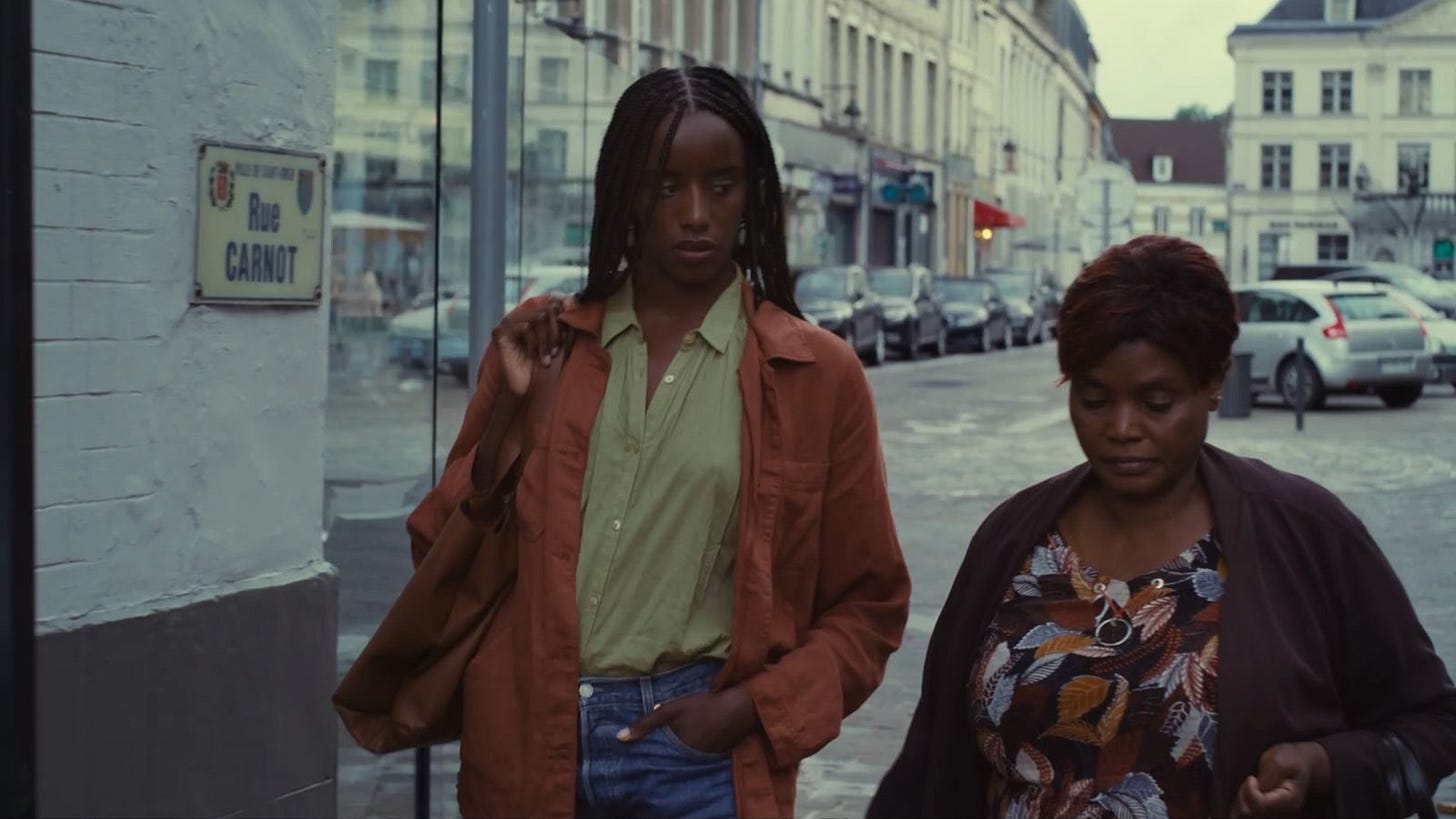There’s a moment in Saint Omer where Laurence Coly’s interest in philosophy and Ludwig Wittgenstein in particular is mocked by a faculty member of the university where Coly studied. When the advisor names Wittgenstein as interest of Coly’s thesis, she does so with a scoff and she was joined by a few laughs in the audience at the Berkeley Art Museum and Pacific Film Archive last Sunday afternoon during Black Life’s screening. Alice Diop’s 2022 film, her debut in narrative after nearly two decades of documentary work, is a severely quiet film for most of the two hours it runs. This scene, like most of the courtroom scenes, was silent save for the dialogue and so the room’s laughs echoing the one on screen, were unmissable. It’s safe to assume the advisor on screen thought it bizarre, even implausible that this Senegalese woman who stands trial for the murder of her infant daughter should be interested in a renowned Austrian philosopher. It seems some in the audience thought the same.
There’s a pause after this assertion by the advisor before she speaks again to plainly reveal the racist logic by which she concludes that Coly is untrustworthy in her studies and in her word. The air in the room at BAMPFA deflated in that moment. It was palpable especially because the film took a breath once more.
It was my first time watching Saint Omer with an audience and on a large theater screen. That sequence in particular, the laugh on screen prompting the laughs in the room then the subsequent deflation, made me realize a new feat of Diop’s which I couldn’t note watching her film on my laptop. Moments after the film ended, I was taking a walk and debriefing with my friend who’d attended the screening about what we’d just seen and he said the film carried metaphysical qualities. I was thrilled he named it so because metaphysical perfectly describes Diop’s dexterity in compelling the viewer into her scenes. You can hear the actor’s breath in this quiet film of hers with a sparse and poignant soundtrack. In fact you could hear your own breath. (I caught myself holding my breath at times as not to disturb the trial going on in front of me.) She blends the borders Diop. The proportions of the actors, and how the camera follows them often mimic the curious eyes of Rama, the professor and writer witnessing the trial and that same gaze naturally guides our own eyes which drag along hers. Sometimes it’s a quick glance at the judge or the prosecutor. Sometimes Rama’s eyes, the camera, and our eyes too, fall for a long while on Coly—even when others are speaking, Rama, the camera and we are transfixed by her. At some point, after we get accustomed to the hallowed wood laced courtroom where most of Saint Omer takes place, we slowly melt into it from our very own seats of witness. And through our feelings, our witness, we become implicated in this trial in front of us.
I selected this film to screen because friends who’d seen it said they were haunted by it and maybe I wanted to see if I would resist or fall to its spell. I have no points to prove in resisting and I don’t believe the film has an agenda to haunt me. But how could it not captivate? A tale of motherhood’s most morbid obscenity told with a abundant patience and curiosity. Rama carries much of that curiosity standing in as a proxy for Diop’s own fascination which led her to attend the 2016 trial of Fabianne Kabou, the woman whose story the film is based on. Watching the film once then twice, I was in awe at Diop’s ability to lay out several parallels in a story that seem to sometimes collapse them onto each other and at other times split them apart. There are analogous abandonments and motherhoods and daughters running alongside proxies for maternal care in intimate relationships and in state power. Coly’s story is certainly haunting but it’s also these subtly concurrent lines threaded in this film that follow you out the door.



